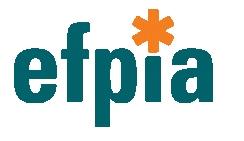WELCOME TO ENABLE
The ENABLE project was launched in February 2014 and ended in October 2021 within IMI's 'New Drugs for Bad Bugs' (ND4BB) programme.
The ENABLE consortium worked to advance the development of promising new antibiotic compounds targeting Gram-negative bacteria such as Escherichia coli. The goal of the project was to develop attractive antimicrobial candidates for extensive preclinical studies and First-in-Human clinical trials, bringing new antibiotics to treat Gram-negative infections one step closer to patients.
ENABLE managed a drug discovery and development engine for testing and optimising compounds in all preclinical phases of antibiotic development. ENABLE was an initiative targeted at SMEs and research institutes.
Goals of ENABLE:
• three antibacterial Leads
• two antibacterial Development Candidates
• at least one compound into preclinical and Phase 1 clinical studies
How did ENABLE work?
ENABLE was not only a source of funding to advance promising compounds, but it was also:
- an expert knowledge hub
The Portfolio Management Committee (PMC) of ENABLE was composed of 15 experts from leading EFPIA companies, universities and independent consultants from all over the globe. With their long and extensive expertise in drug discovery, clinical development and anti-bacterials they mentored scientific discovery programmes and advised on challenges as well as on how to mitigate these.
-
an alliance and collaboration to advance one common goal: fighting AMR
Selected ENABLE participants benefitted from a well-developed drug discovery and development platform that helped advance scientific discovery programmes in a very efficient manner. ENABLE Consortium was made up of experts and staff in many fields including microbiology, chemistry, ADME, in vivo studies and safety who were providing support to bring compounds forward.
-
supporting “raw diamonds”
If a scientific discovery programme was not yet meeting thresholds with regards to compound maturity or generated data package, ENABLE was offering a Material Transfer Agreement (MTA) Route – a kind of pre-ENABLE funding. If accepted, this was also 100% funded by ENABLE.
-
non-dilutive
Programme owners retained full ownership of their asset and all value added through the work of ENABLE. A value sharing agreement was created within the consortium, where a small percentage of future income generated from the resulting anti-bacterial by the programme owner would be shared between partners.
Clenbuterol Hydrochloride: Cycle, Side Effects And Dosage
Clenbuterol hydrochloride is a bronchodilator commonly used in veterinary medicine and sometimes misused for weight loss or performance enhancement. Its mechanism involves stimulating beta-2 adrenergic receptors, leading to various systemic effects.
General Description
Clenbuterol hydrochloride is a synthetic compound classified as a beta-2 agonist. It is primarily prescribed for respiratory conditions in animals but has gained attention for its thermogenic properties. The substance is available in different formulations, including tablets and injectables.
Physiological effects
The drug increases metabolic rate by stimulating the central nervous system and promoting fat breakdown. It enhances oxygen transport by improving lung function and may temporarily increase heart rate and blood pressure. Long-term use can lead to receptor desensitization and reduced efficacy over time.
Side effects
Common side effects include tremors, palpitations, insomnia, and headaches. Prolonged or high-dose usage may cause cardiac hypertrophy, arrhythmias, and electrolyte imbalances. Gastrointestinal disturbances like nausea and vomiting are also reported. The risk of adverse effects increases with improper dosage or concurrent use of stimulants.
Cycle and Dosage
Dosage varies based on the intended use and individual tolerance. For veterinary applications, it is typically administered at 0.01–0.04 mg per kg of body weight every 12–24 hours. Human clenbuterol cycle for non-medical purposes often involves lower doses, but exact recommendations are not standardized. Medical supervision is essential to avoid toxicity.
Reference
Clenbuterol hydrochloride information sourced from chemical and pharmacological databases.
Clenbuterol hydrochloride
This compound remains a subject of regulatory scrutiny due to its potential for misuse. Its application is restricted in many regions, emphasizing the need for controlled usage under professional guidance.
